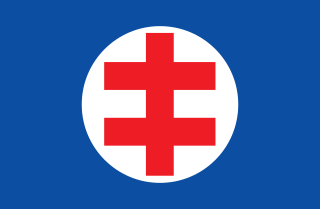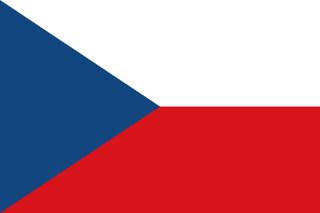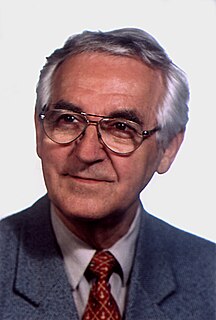Related Research Articles

Tomáš Garrigue Masaryk was a Czechoslovak politician, statesman, sociologist, and philosopher. Until 1914, he advocated restructuring the Austro-Hungarian Empire into a federal state. With the help of the Allied Powers, Masaryk gained independence for a Czechoslovak Republic as World War I ended in 1918. He co-founded Czechoslovakia together with Milan Rastislav Štefánik and Edvard Beneš and served as its first president.
The First Czechoslovak Republic emerged from the collapse of the Austro-Hungarian Empire in October 1918. The new state consisted mostly of territories inhabited by Czechs and Slovaks, but also included areas containing majority populations of other nationalities, particularly Germans (22.95 %), who accounted for more citizens than the state's second state nation of the Slovaks, Hungarians (5.47 %) and Ruthenians (3.39 %). The new state comprised the total of Bohemia whose borders did not coincide with the language border between German and Czech. Despite initially developing effective representative institutions alongside a successful economy, the deteriorating international economic situation in the 1930s gave rise to growing ethnic tensions. The dispute between the Czech and German populations, fanned by the rise of National Socialism in neighbouring Germany, resulted in the loss of territory under the terms of the Munich Agreement and subsequent events in the autumn of 1938, bringing about the end of the First Republic.
With the collapse of the Habsburg monarchy at the end of World War I, the independent country of Czechoslovakia was formed as a result of the critical intervention of U.S. President Woodrow Wilson, among others.
Zaolzie(listen) is the Polish name for an area now in the Czech Republic which was disputed between interwar Poland and Czechoslovakia. The name means "lands beyond the Olza River"; it is also called Śląsk zaolziański, meaning "trans-Olza Silesia". Equivalent terms in other languages include Zaolší (Zaolží) in Czech and Olsa-Gebiet in German. The Zaolzie region was created in 1920, when Cieszyn Silesia was divided between Czechoslovakia and Poland. Zaolzie forms the eastern part of the Czech portion of Cieszyn Silesia. The division did not satisfy any side, and persisting conflict over the region led to its annexation by Poland in October 1938, following the Munich Agreement. After the invasion of Poland in 1939, the area became a part of Nazi Germany until 1945. After the war, the 1920 borders were restored.

Hlinka's Slovak People's Party, also known as the Slovak People's Party or the Hlinka Party, was a far-right clerico-fascist political party with a strong Catholic fundamentalist and authoritarian ideology. Its members were often called ľudáci.

The Decrees of the President of the Republic and the Constitutional Decrees of the President of the Republic, commonly known as the Beneš decrees, were a series of laws drafted by the Czechoslovak government-in-exile in the absence of the Czechoslovak parliament during the German occupation of Czechoslovakia in World War II. They were issued by President Edvard Beneš from 21 July 1940 to 27 October 1945 and retroactively ratified by the Interim National Assembly of Czechoslovakia on 6 March 1946.

Hungarians are the largest ethnic minority in Slovakia. According to the 2011 Slovak census, 458,467 people declared themselves Hungarians, while 508,714 stated that Hungarian was their mother tongue.

The First Czechoslovak Republic, often colloquially referred to as the First Republic, was the first Czechoslovak state that existed from 1918 to 1938, dominated by ethnic Czechs and Slovaks, the country was commonly called Czechoslovakia, a compound of Czech and Slovak; which gradually became the most widely used name for its successor states. It was composed of former territories of Austria-Hungary, inheriting different systems of administration from the formerly Austrian and Hungarian territories.

The Republic of Poland and Czechoslovakia established relations early in the interwar period, after both countries gained independence. Those relations were somewhat strained by the Polish–Czechoslovak border conflicts over Zaolzie and Cieszyn in the early 1920s and late 1930s. Both countries joined the Allies during World War II. After the war they both fell into the Soviet sphere of influence. Poland, together with other Eastern Bloc countries, participated in the Warsaw Pact invasion of Czechoslovakia in 1968. Relations between the two countries were nonetheless rather amicable, but became somewhat strained in the aftermath of the rise of the Solidarity movement in Poland in 1980 and 1981, improving again afterwards.

Prof. PhDr. Zdeněk Kárník, DrSc. was a Czech historian and pedagogue.
The Jewish Party was a political party of the First Czechoslovak Republic. It was founded in 1919 by the Jewish National Council in Prague. It was the strongest Jewish political party in the interwar Czechoslovakia although many Jews were rather active in non-Jewish parties, be they Czech, German or Hungarian. The party adopted a Zionist political program and succeeded in influencing the Czechoslovak government to acknowledge Jews as an official national minority in the constitution of 1920.

Elections for deputies to the Czechoslovak parliament from the Užhorod electoral district were held on 16 March 1924. Nine members of the Chamber of Deputies and four senators were elected.

Parliamentary elections in the First Czechoslovak Republic were held in 1920, 1925, 1929 and 1935. The Czechoslovak National Assembly consisted of two chambers, the Chamber of Deputies and the Senate, both elected through universal suffrage. During the First Republic, many political parties struggled for political influence and only once did a single party muster a quarter of the national vote. Parties were generally set up along ethnic lines.

The Těšín electoral district was a parliamentary constituency in the First Czechoslovak Republic. It was set up ahead of the April 1920 parliamentary election in an area that both Czechoslovakia and Poland claimed as theirs. No vote was held there in 1920 and the constituency was abolished before the 1925 parliamentary election.
The German People's Group in Czecho-Slovakia was a German minority political party in the Second Czechoslovak Republic from October 30, 1938 to March 1939.

Karl Kreibich (1883–1966), also known as Karel Kreibich, was a Sudeten German communist politician and author in Czechoslovakia. Kreibich emerged as the main leader of the revolutionary socialist movement amongst German workers in Bohemia after the First World War. He was a leader of the Communist Party of Czechoslovakia and a functionary of the Communist International. During the First Czechoslovak Republic, he was elected to parliament thrice. During the Second World War he was part of the exiled Czechoslovak State Council, based in London. After the war he served as Czechoslovak ambassador to the Soviet Union.
Sdružení československých horníků was a Syndicalist mine workers trade union in Czechoslovakia.
Union der Bergarbeiter in der CSR, initially known as Union der Bergarbeiter Österreichs, was a miners trade union of miners in Austria and the First Czechoslovak Republic 1903-1938. Initially a multi-ethnic union in Habsburg Austria (Cisleithania), it was divided along ethnic lines in 1910. After the establishment of the Czechoslovak Republic, it became a union for miners of German ethnicity.
Odborové sdružení křesťanského dělnictva v ČSR was a trade union centre in the First Czechoslovak Republic. By the mid-1920s, its affiliated unions had a combined membership of 81,846. The organization was linked to the Czechoslovak People's Party The organization had its headquarter in Brno.
Národní sdružení odborových organizací was a trade union centre in the Czechoslovakia. Politically it was linked to the right-wing Czechoslovak National Democratic Party. The centre was organized by the former socialist Josef Hudec. As of 1929 organization was divided in 7 sections and had 304 branches.
References
- 1 2 Vladimír Dubský (1984). Závodní výbory a rady v předmnichovském Československu. Práce. p. 271, 274.
- ↑ Boris Stern (1925). Works Council Movement in Germany. U.S. Government Printing Office. p. 95.
- ↑ Sociálni ústav C ̆eskoslovenské Republiky, Prague (1924). Social Policy in the Czechoslovak Republic. "Orbis" publishing Company. p. 80.
- 1 2 3 4 The Czechoslovak Review. Bohemian Review Company. 1924. p. 153.
- ↑ Joan Campbell; John P. Windmuller (1992). European Labor Unions. Greenwood Publishing Group. p. 83. ISBN 978-0-313-26371-2.
- ↑ Masaryk University. Sdružení československých horníků - představitelé revolučního syndikalismu
- ↑ Masarykova akademie präce, Prague. Üstav pro technichë hospodärs̈tvï prümyslovë (1925). Knihovna. p. 160.
- ↑ Ročenka Československé republiky. 1926. p. 194.
- ↑ Miloš Trapl (1995). Political Catholicism and the Czechoslovak People's Party in Czechoslovakia, 1918-1938. Social Science Monographs. p. 75. ISBN 978-0-88033-306-1.
- 1 2 3 Oellerman, Thomas. Mehr als nur eine Partei. Die deutsche Sozialdemokratie in der Tschechoslowakischen Republik 1918-1938
- ↑ Peter Glotz (1990). München 1938: das Ende des alten Europa. R. Hobbing. p. 189. ISBN 978-3-920460-55-0.